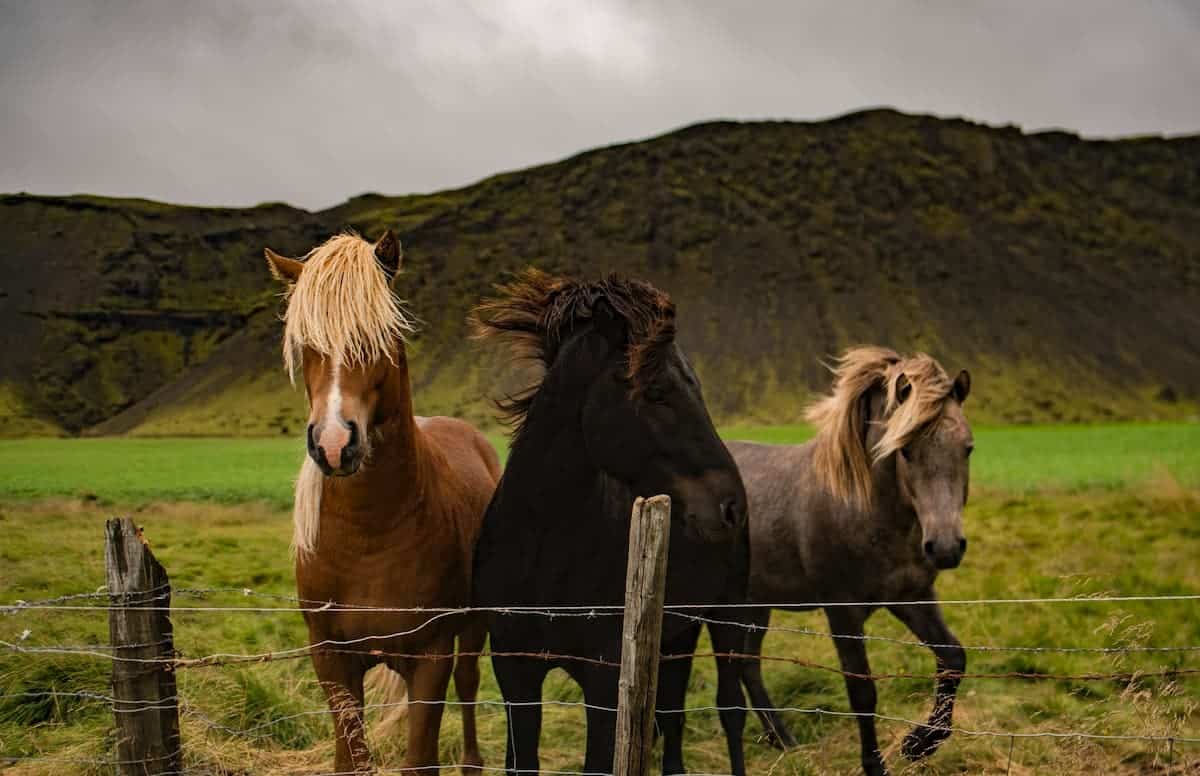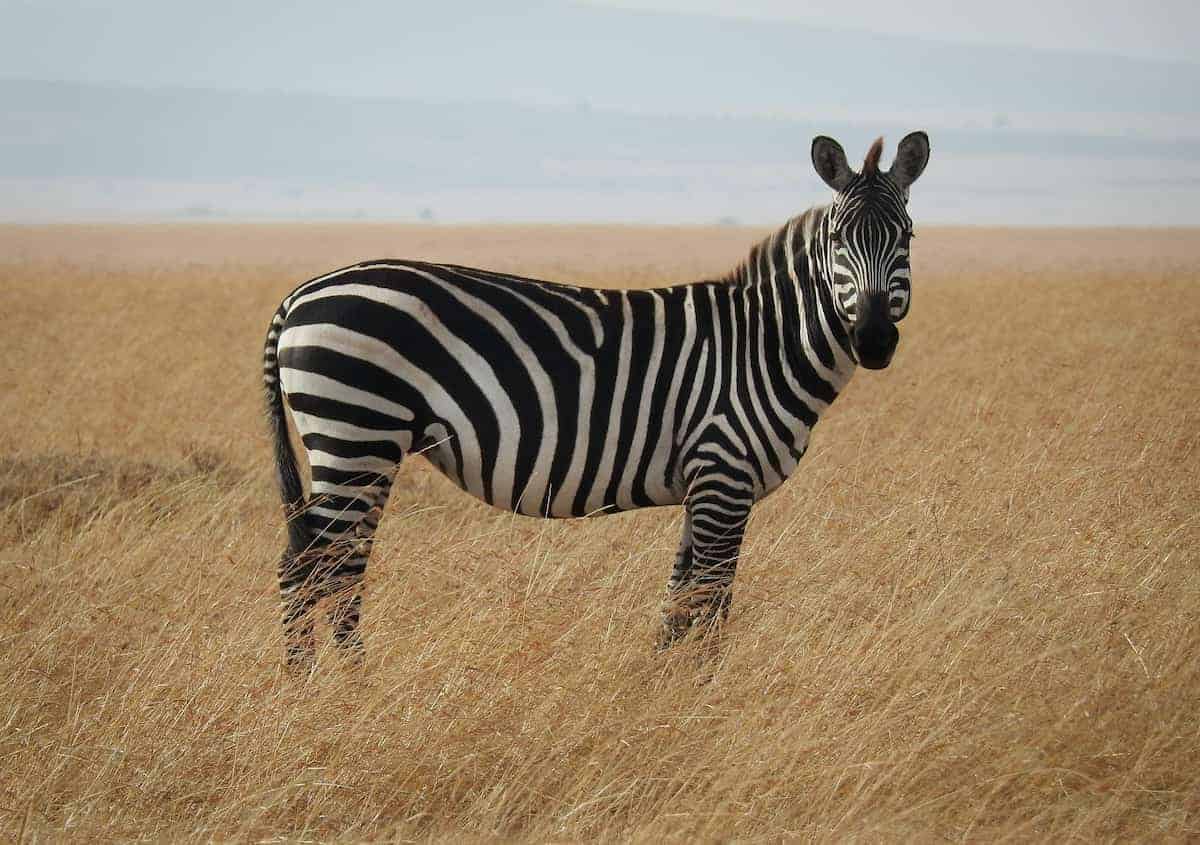Horses sleep standing up, but they don’t spend all their time that way. Horses will lie down to rest during the day, usually in groups of two or three. At night, they graze until it is time for bed. They often lie down and stand back up again before going to sleep on their feet.
Horses don’t get much sleep because they are prey animals who need to be alert at all times. They have deeply rooted instincts, and physiology that affects their sleeping habits. Horses, similar to humans, have a short REM (REM stands for rapid eye movement) cycle during which dreams occur. Surprisingly, horses average only about three hours of sleep per day as adults and slightly more as foals (young horses).
They Have to Sleep Standing up
Horses are such large animals that it can be bad for their health if they lay down for too long. They can suffer internal injury from restricted blood flow to certain parts of their bodies when lying down, so they make sure to only do so when they need REM sleep.
Not laying down to sleep is also instinctual. In the wild, horses are prey animals. They have straight spines and large bodies that make it difficult to get up once down. If a horse were to be attacked while lying down, there’s a good chance it wouldn’t be able to get up to flee before it was too late. This is why when you see horses laying down, they’re almost always in groups, with at least one other horse standing.
The standing horse is up to keep watch over those laying down, so that they can all be alerted if danger approaches. Domesticated horses might lay down alone if they’re within the safe confines of their own barn. Even still, they won’t be down for long.
How Can Horses Sleep Standing up?
The fact that horses only sleep standing up is a common misconception. As you know, they lay down for REM sleep. Horses do spend most of their sleeping time on all fours, but they will lie down to rest during the day, usually in groups of two or three. At night, they graze until it is time for bed. They often lie down and stand back up again before going to sleep on their feet. But how can horses sleep standing up?
If you’ve ever tried to sleep standing up, you probably fell over immediately or were completely unsuccessful. It’s not easy for humans to sleep standing up because when our knees lock, it restricts blood flow to the rest of the body. Keep your knees locked out for too long, and you will faint. That’s a fact.
Horses, on the other hand, have special joints that allow them to remain locked without restricting any blood flow. This special structure is called the “staying apparatus.” Also, horses are able to rest their entire body weight on just three legs, while allowing the fourth leg to rest. Throughout their standing sleep, horses will alternate legs so that each leg has a chance to rest. If you have horses, you might notice them switch from one leg to another, or see three legs locked with one bent.
If a horse is somehow unable to rest on one leg, it will be unable to sleep and certainly unable to lay down and get back up. This is why it’s common practice for owners to euthanize horses if they break a leg. It seems extreme, but it’s actually the humane thing to do, instead of allowing the horse to die a slow, painful, sleep-deprived death.
REM Sleep
The REM phase of sleep is known as rapid eye movement sleep. Throughout this REM phase, they may twitch occasionally while dreaming – which can be a cute sight if you happen to catch them in the act. You might also notice that your cat starts breathing heavily during the REM cycle. This phase of sleep is when the brain is most active, so it’s not unusual (even for humans) to breathe more heavily, and twitch more.
How Long Do Horses Sleep?
It’s most common for horses to sleep around three hours per day. This can fluctuate greatly, though. Sometimes horses might sleep for much longer — up to 12 hours in some cases.
This has a little bit to do with their level of activity, but researchers are still uncertain of how long horses need to sleep. They’ve always been prey animals in the wild, so staying in one place unaltered for too long simply isn’t in their DNA.
Do Horses Sleep at Night?
While they do sleep at night, horses are neither diurnal or nocturnal. Horses will most often spend some time resting on their feet, grazing for a while, resting some more, and maybe laying down for some deeper sleep. They will often repeat this process throughout the day as well, unless they’re used for work. Their sleep schedule depends largely on their daily routine.
Do Horses Sleep with Their Eyes Open?
Yes and no. Most times when horses are simply resting, they will leave their eyes open. It can be hard to tell if a horse is sleeping, as they do often have their eyes open even when lying down sometimes. However this isn’t always true. Sometimes you might catch your horse with its eyes closed, fast asleep.
Do Horses Snore?
Believe it or not, horses snore! You might not hear it while they’re standing up, but if you can get close enough while they’re laying down, you might catch them gently snoring. It’s not as loud as a human snore, but you can definitely hear it if you’re close enough.
How to Tell When a Horse Is Asleep
Since horses sleep standing up, and usually keep their eyes open when they do, it can be difficult to tell whether or not they’re sleeping if you don’t know what to look for. To tell if a horse is sleeping or not, keep a close eye on their hind legs. If they’re asleep, one of them will be locked straight, and the other one will be bent or cocked. Keep this in mind when approaching your horse, so as not to unintentionally startle them.
Conclusion
All in all, horses sleep standing up for a variety of reasons. Their special joint structure, ability to rest on three legs, and prey animal instincts make it possible for them to get the rest they need while remaining standing. Horses usually sleep for around three hours per day, but this can vary greatly depending on their daily routine.
Horses may sleep with their eyes open or closed, and sometimes snore gently. The best way to tell if a horse is asleep is by looking at their hind legs. One will be locked straight and the other will be bent or cocked.





